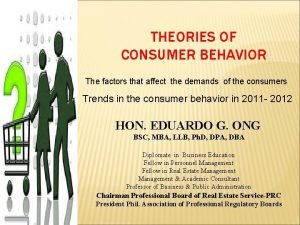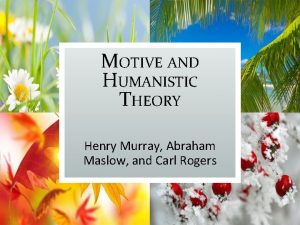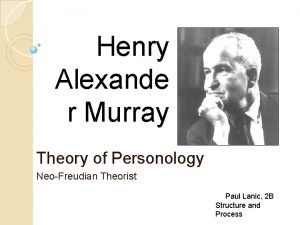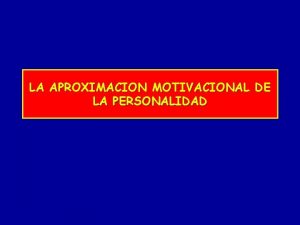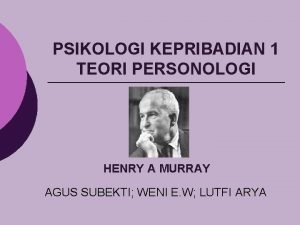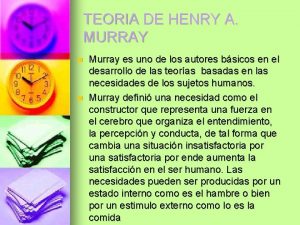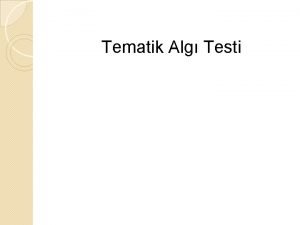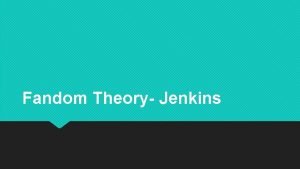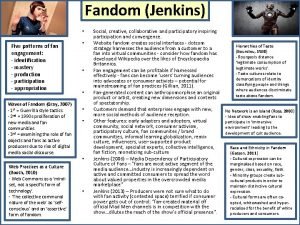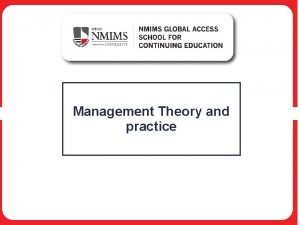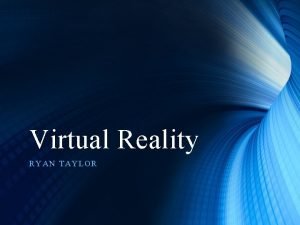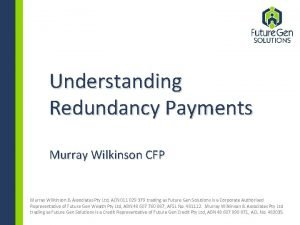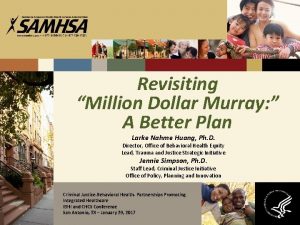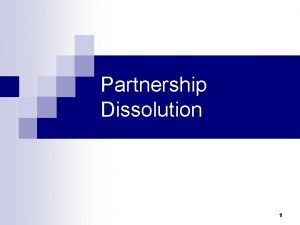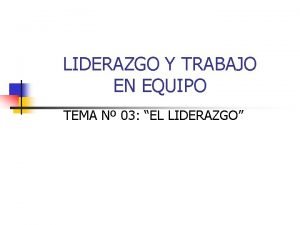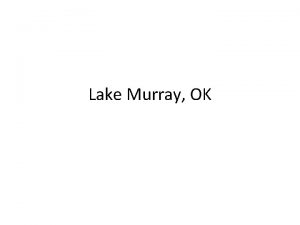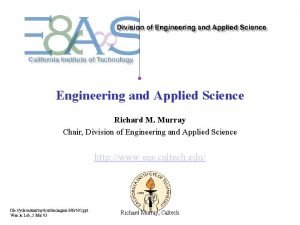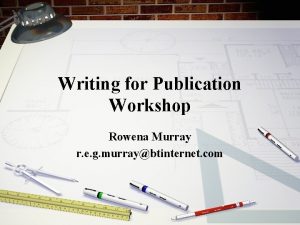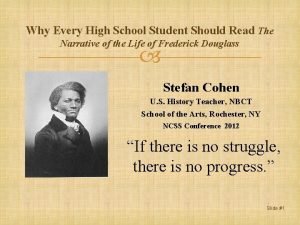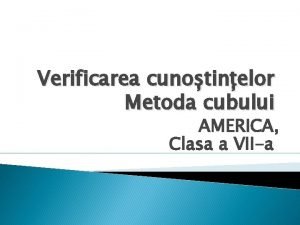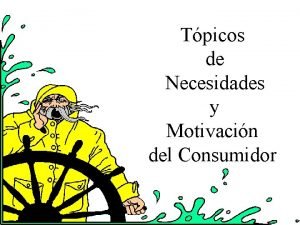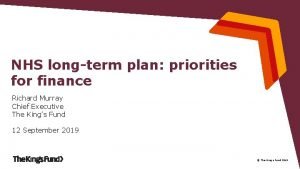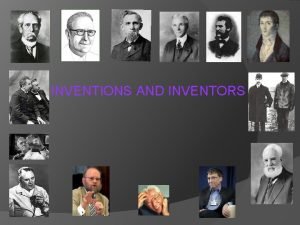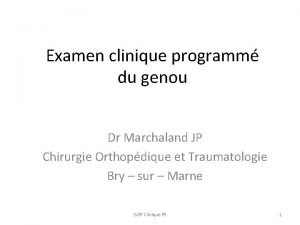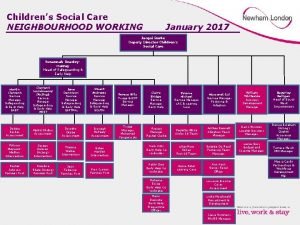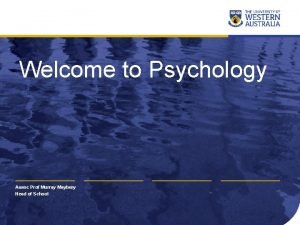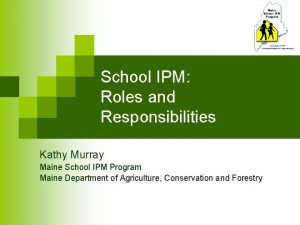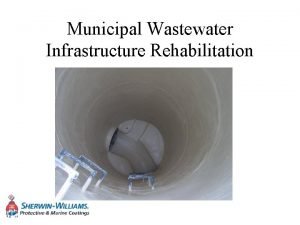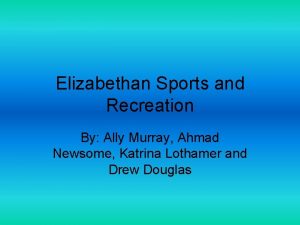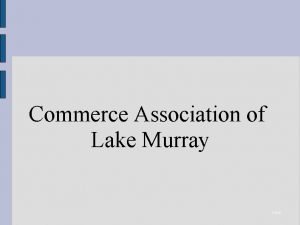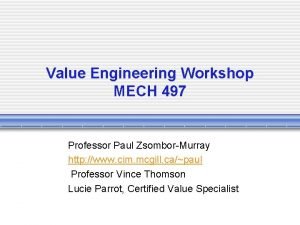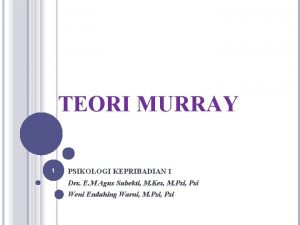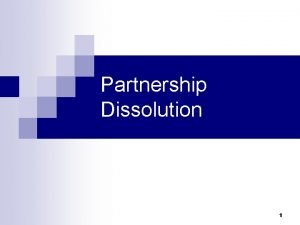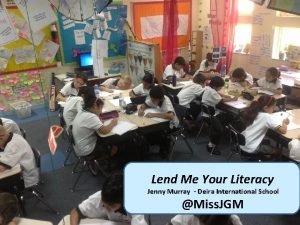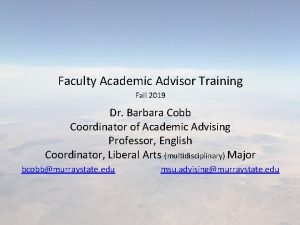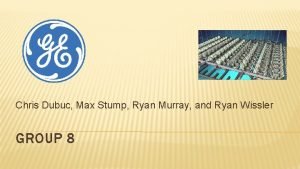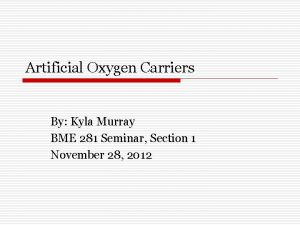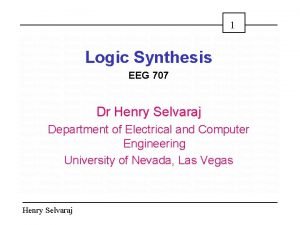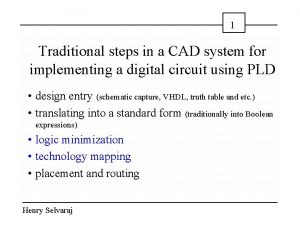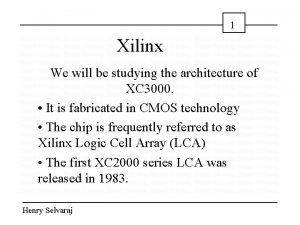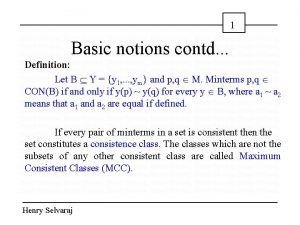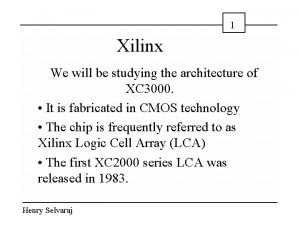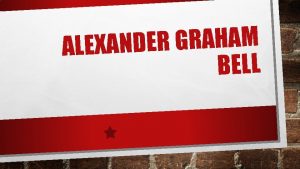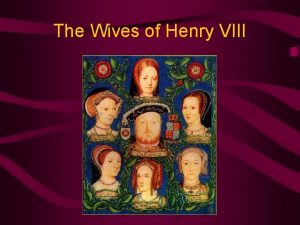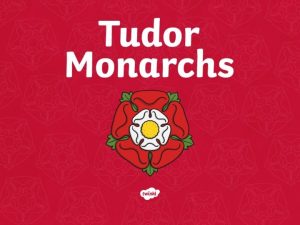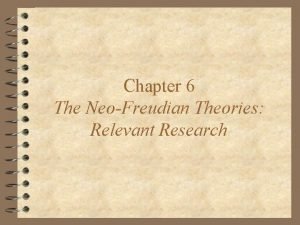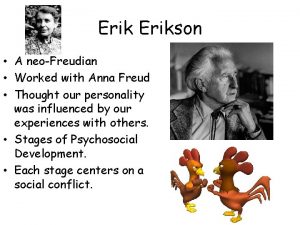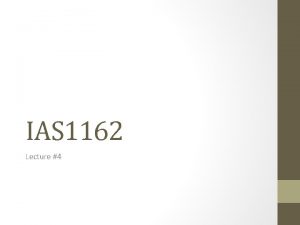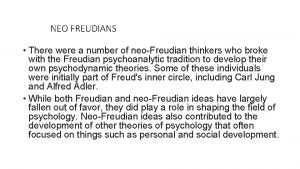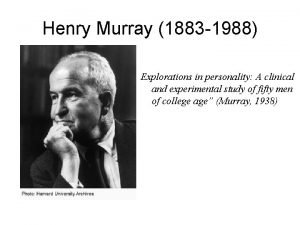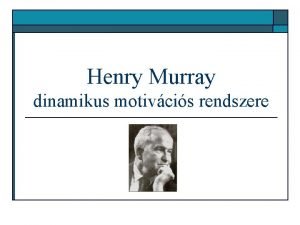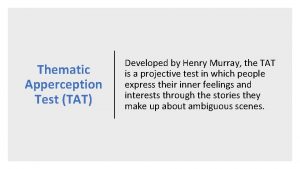Henry Alexande r Murray Theory of Personology NeoFreudian

![“For me, personality is [a] jungle without boundaries. ” -Henry Murray �Trait Theories/Theorists ◦ “For me, personality is [a] jungle without boundaries. ” -Henry Murray �Trait Theories/Theorists ◦](https://slidetodoc.com/presentation_image_h2/40105c5f9251f4cb7c0f60c02ce75ae6/image-2.jpg)



















































- Slides: 53

Henry Alexande r Murray Theory of Personology Neo-Freudian Theorist Paul Lanic, 2 B Structure and Process
![For me personality is a jungle without boundaries Henry Murray Trait TheoriesTheorists “For me, personality is [a] jungle without boundaries. ” -Henry Murray �Trait Theories/Theorists ◦](https://slidetodoc.com/presentation_image_h2/40105c5f9251f4cb7c0f60c02ce75ae6/image-2.jpg)
“For me, personality is [a] jungle without boundaries. ” -Henry Murray �Trait Theories/Theorists ◦ These are theories/ists that reject or make way out of the conception that personality must be studied in accordance to the principles of Freudian Psychoanalysis Paul Lanic, 2 B Structure and Process

What are traits? Ψ Traits are behavior consistent over time. Ψ They are theoretical components of an individual used to explain the person’s behavioral consistencies. Paul Lanic, 2 B Structure and Process

Therefore… a trait theorist would not look into the ‘specifics’ of behavior; rather, a trait theorist would look into the collective disposition of the person Paul Lanic, 2 B Structure and Process

Chapter Outline �Personology Defined… �Structure ◦ Division of Personology �Freud’s Provinces of the Mind �Process ◦ Press-Need Pattern; Tension Reduction ◦ Vectors of Personology ◦ Life Themas Paul Lanic, 2 B Structure and Process

PERSONOLOGY �Essentially, it is the study of the person himself. �“No isolated piece of behavior could ever be understood without taking into account the fully functioning person. ” -Henry Murray

“Personology is simple in structure but complex in detail. ” -Henry A. Murray

Divisions of Personology �Freud’s contention of the “Provinces of the Mind”; but differs in interpretation. ◦ Id ◦ Superego ◦ Ego Paul Lanic, 2 B Structure and Process

ID �The repository of all innate impulsive tendencies. �Provides behavior. �Freud: the energy and the direction of contains primitive, amoral & lustful impulses �Murray: contains socially acceptable impulses like empathy and love.

�Jung’s Shadow Archetype �The strength of Id impulse varies among individuals. Paul Lanic, 2 B Structure and Process

SUPEREGO �Freud: Stems out after the child identifies with his/her parent and acts as the parental voice. �Murray: The internalization of the culture’s values and norms by which we come to judge our behavior and that of others. Paul Lanic, 2 B Structure and Process

�Freud: At the age of 5, the superego is crystallized. �Murray: Superego continuously develop throughout lifetime. �Freud: The superego is in constant conflict with Id. �Murray: Not in constant conflict because the Id contains not just bad impulses but

�Freud: Gives of guilt and feelings of inferiority when ego acts contrary to its demands or unable to meet its standards. �Murray: Superego thwarts socially unacceptable impulses thus it determines when, where and how acceptable ones are expressed and satisfied. Paul Lanic, 2 B Structure and Process

�While the superego is developing so is the ego-ideal. �Represents what we can become at our best (IDEALIZED SELF IMAGE) and not what we can become if we do not meet superego’s standard. Paul Lanic, 2 B Structure and Process

EGO �Is the rational governor of personality. �Opposes Freud’s contention that the ego is the slave of id, superego and the reality. �In Murray’s definition, the ego is the one that organizes behavior coming Lanic, or 2 B from the id impulse whether. Paul good Structure and bad. Process

�Called as the arbiter of the two contenders, id and superego and may favor one over the other. �Can integrate the two dimensions of personality so that we want to do (Id impulse) is in harmony with what the society expects us to do (superego). Paul Lanic, 2 B Structure and Process

�A strong ego can mediate between the clashes of impulses between id and superego but conflicts in Murray’s system can arise when there is a presence of a weak ego. Paul Lanic, 2 B Structure and Process

Process �Directionality ◦ The study of man’s directional tendencies holds the key to understanding human behavior. ◦ Has led to the most complex system of motivation Paul Lanic, 2 B Structure and Process

�Needs ◦ Some state of affairs which, if presents, would improve the well being of an organism. ◦ Are constructs, or inferred conditions, but they are considered to be real. ◦ A need involves a physiochemical force in the brain that directs perceptual and intellectual abilities. ◦ Internal Paul Lanic, 2 B Structure and Process

Types of Needs �Primary Needs (Viscerogenic Needs) �Needs that arise from the internal body state �Required for survival �Secondary Needs (Psychogenic Needs) �Needs that arise indirectly from the primary needs �Has no specific origin in the body �Concerned with emotional satisfaction Paul Lanic, 2 B Structure and Process

�Reactive Needs �Involves a response to something that is specific in the environment. �Are only aroused when the object appears. �Proactive Needs �Do not depend on the presence of an object �These are needs that when aroused, do not depend on the environment. Paul Lanic, 2 B Structure and Process

�Overt Needs ◦ Needs that express themselves in motor behavior. o. Covert Needs o Usually belonged to the world of fantasy and dreams.

�Murray developed a list of 12 primary needs and 28 secondary needs. Primary Needs n. water n. sex Deficiency need for liquids. Inner tension need, due to secretions. n. urination Inner tension need, due to expulsion pressure. n. harm avoidance Negative need, due to environmental threat. Secondary Needs n. abasement Need to passively submit to others. n. affiliation Need to behave cooperatively with others. n. dominance Need to be in control.

Characteristics of a Need � Prepotency � Subsidiation � Need interaction Paul Lanic, 2 B Structure and Process

Prepotency �More important needs are to be satisfied first before other needs can operate. �Ex: need to study need to play need to eat need of air/oxygen Paul Lanic, 2 B Structure and Process

Subsidiation �Process wherein one need operates in the service of another. �Ex: Subsidiary need n. Affiliation n. Achievement n. Rejection n. Harmavoidance Paul Lanic, 2 B Structure and Process

Need Interaction �Needs do not operate in complete isolation from one another �Only two positive needs that interact can form a good/positive goal. �One negative in interacting needs make the goal bad or socially unaccepted.

�Ex. need to eat (+) + need to drink (+) = socially accepted need to pass (+) + need to cheat (-) = socially unaccepted

Press Aspects of the environment that are effective determinants of behavior. - can be termed as “pressure”. - external - press are governed by the pressure of reality - Paul Lanic, 2 B Structure and Process

Two Kinds of Press � Alpha Press - Press governed by reality or external factor in behavior. � Beta Press - A kind of press that is dependent to the individual. Paul Lanic, 2 B Structure and Process

Example 1. �A 30 year-old woman is not yet married. Alpha press: Her relatives say the should marry soon. Beta press: “They’re mocking me for being single! I’m not born to be one. They’ll see. I’ll marry a perfect man. ”

Example 2. �A man has just become a father. Alpha Press: He needed to look for a job to sustain his family’s needs. Beta Press: “My son must be proud for me in the future. I must become a president of one company. ”

Press-Need Pattern (Tension-reduction) • Need and Press are the behavioral units of personality (actones). • Produces tension (energy) to create an action. • The interaction between a press and a need produces an OPTIONAL BEHAVIOR. Paul Lanic, 2 B Structure and Process

Case 1: A young adult experiences a press of poverty. PRESS OF POVERTY NEED OF FINANCIAL SECURITY FIND A JOB BEG FOR ALMS (OPTIONAL BEHAVIOR) ROB A BANK

Case 2 (with alpha and beta press): A professor announces a hard examination. PRESS OF EXAMINATION NEED TO STUDY (produced from the alpha press) STUDY HARD MAKE REVIEWERS LITTLE NEED TO STUDY (produced from the beta press) WILL NOT STUDY GO TO MALL

Vectors of Personology Press of failure Will not study Need to study Proceed forward Fixate Direction of the behavior • The direction of the behavior will be dependent on the life themas. •

Thema � the combination of the need and the press or the total picture of the person’s functioning. � is the core of personality in personology. � Life themas are certain values which form a kind of “supercontrol”Paul to. Lanic, the 2 B Structure and individual. Process

DEVELOPMENT OF PERSONALITY Aira Lorraine P. Fabellon 2 P 2 Growth and Development

• Murray divided childhood into five stages. • Each stage leaves its mark on our personality in the form of an unconscious “COMPLEX” that directs our later development. • Complex: A normal pattern of childhood development that influences the adult personality and is completely unconscious. • It only becomes abnormal when they are manifested in an extreme manner or when a person becomes fixated at that stage. Aira Lorraine P. Fabellon 2 P 2 Growth and Development

STAGES OF DEVELOPMENT 1. The Claustral Stage • The fetus in the womb is secure, serene and dependent, conditions we all occasionally wishortoprenatal reinstate. • may Residuals of the uterine experience of the individual. a. Simple claustral complex • Desires to be in a small, warm, dark place that is safe and secluded. • Tends to be dependent on others, passive and oriented toward safe, familiar behaviors that worked in the past. • Need for passivity, harmavoidance, seclusion and succorance Aira Lorraine P. Fabellon 2 P 2 Growth and Development

b. Insupport claustral complex • Centers on feelings of insecurity and helplessness • Fears open spaces, falling, drowning, fires, earthquakes or any situation involving novelty and change. c. Egression or anti-claustral complex • Based on a need to escape from restraining womblike conditions. • Includes fear of suffocation and confinement • Manifests itself in a preference for open spaces, fresh air, travel, movement, change and novelty. • Strong need for autonomy Aira Lorraine P. Fabellon 2 P 2 Growth and Development

2. The Oral Stage • Represent derivatives of early feeding experiences. a. Oral succorance complex • Features a combination of mouth activities, passive tendencies, and the need to be supported and protected. • Behavioral manifestations include sucking, kissing, compulsive eating, drinking, and a hunger for affection, sympathy, protection, and love. • Need for passivity and succorance. b. Oral aggression complex • Combines oral and aggressive behaviors, including biting, spitting, shouting, and verbal aggression such as sarcasm. • Strong aggressive needs and a need for harmavoidance Aira Lorraine P. Fabellon 2 P 2 Growth and Development

c. Oral rejection complex • Includes vomiting, being picky about food, eating little, fearing oral contamination (such as from kissing) • Desires seclusion, and avoiding dependence on others • Need for seclusion and autonomy Aira Lorraine P. Fabellon 2 P 2 Growth and Development

3. The Anal Stage • Derived from events associated with the act of defecating and bowel training • There is a preoccupation with defecation, anal humor, and feceslike material such as dirt, mud, plaster, and clay. a. Anal rejection complex • A person with this complex may be dirty and disorganized. • Need for autonomy and anal sexuality. Aira Lorraine P. Fabellon 2 P 2 Growth and Development

b. Anal retention complex • Manifested in accumulating, saving, and collecting things, and in cleanliness, neatness, and orderliness. • Need for autonomy and to retain possessions and a strong need for order and cleanliness. Aira Lorraine P. Fabellon 2 P 2 Growth and Development

4. The Urethral Stage • Associated with excessive ambition, a distorted sense of self-esteem, exhibitionism, bedwetting, sexual cravings, and selflove. • Sometimes called the “Icarus Complex” • Displays such qualities as a craving for immortality and strong narcissism. • Persons with this complex aim too high and their dreams are shattered by failure. Aira Lorraine P. Fabellon 2 P 2 Growth and Development

5. The Genital/Castration Stage • Murray disagreed with Freud’s contention that fear of castration is the core of anxiety in adult males. He interpreted the castration complex in narrower and more literal fashion as a boy’s fantasy that his penis might be cut off. Murray believed such a fear grows out of childhood masturbation and the parental punishment that may have accompanied it. Aira Lorraine P. Fabellon 2 P 2 Growth and Development

PSYCHOPATHOLOGY

• needs in conflict produce tension • a tension-free state is a source of distress. • prepotency – unsatisfied need such as pain, hunger, and thirst will become the greatest urgency. Thus, directs the whole of personality. • Fixations in complexes are abnormal.

The CHANGE of PERSONOLOGY The OSS Assessment Program v Situational tests v Their behavior in these tests was closely observed. v Projective tests During the World War II years (1941– 1945), Murray directed this assessment program for the Office of Strategic Services (OSS), a forerunner of the CIA. His goal was to select people to serve as spies and saboteurs, operating behind enemy lines in hazardous situations.

The CHANGE of PERSONOLOGY Thematic Apperception Test v The TAT consists of a set of ambiguous pictures depicting simple scenes. v A projective and subjective test v Used for assessing unconscious thoughts, feelings, and fears.

The HUMAN NATURE of PERSONOLOGY • FREE WILL OVER Determinism • RATIONALITY OVER Irrationality • UNIQUENESS OVER Universality • OPTIMISM OVER Pessimism • CAUSALITY OVER Teleology • PROACTIVE AND REACTIVE • HOMEOSTASIS OVER Hetereostasis • SITUATIONAL AND CONSTITUTIONAL

The CRITIQUE of PERSONOLOGY v generates research – moderate vfalsifiability – low v guides action – moderate v parsimony – low v organizes data – low v internally consistent – low
 Secondary needs
Secondary needs Henry murray theory
Henry murray theory Henry murray theory
Henry murray theory Teoria de henry murray
Teoria de henry murray Contoh proceeding dan serial
Contoh proceeding dan serial Teoria de murray
Teoria de murray Henry murray kişilik kuramı
Henry murray kişilik kuramı Jenkins fandom theory
Jenkins fandom theory Henry jenkins fandom theory
Henry jenkins fandom theory Difference between management and administration
Difference between management and administrationDemocritus
 Morton heilig biography
Morton heilig biography Murray wilkinson
Murray wilkinson Arnold murray alan turing
Arnold murray alan turing Million dollar murray
Million dollar murray Garner vs murray rule example
Garner vs murray rule example Ano ang pagsulat ayon kay badayos
Ano ang pagsulat ayon kay badayos Imagen de trabajo en equipo
Imagen de trabajo en equipo Lake murray lodge rates
Lake murray lodge rates Jessica rowling
Jessica rowling Transdevv
Transdevv Fr paul murray
Fr paul murray Richard m. murray
Richard m. murray Alan turing joan clarke
Alan turing joan clarke Rowena murray
Rowena murray Helen pitts douglass
Helen pitts douglass Campia murray darling
Campia murray darling Necesidades biogénicas
Necesidades biogénicas Richard murray
Richard murray Homeless to harvard summary
Homeless to harvard summary John logie baird discovered penicillin in 1929
John logie baird discovered penicillin in 1929 Signe de hugston
Signe de hugston Doug murray actor
Doug murray actor Susannah beasley-murray
Susannah beasley-murray Murray maybery
Murray maybery Lisa schindler murray
Lisa schindler murray Bugs and bees murray ky
Bugs and bees murray ky Duraplate 6100
Duraplate 6100 Models of appraisal in health and social care
Models of appraisal in health and social care Gameball elizabethan era
Gameball elizabethan era Spinners lake murray
Spinners lake murray Alpha kappa alpha information session
Alpha kappa alpha information session Bill murray return of hercules
Bill murray return of hercules Mech 497
Mech 497 Dr. hill doterra
Dr. hill doterra Teori murray
Teori murray Marcus murray truesec
Marcus murray truesec Garner vs murray rule example
Garner vs murray rule example Robert murray md
Robert murray md Reet lend
Reet lend Murray sports complex
Murray sports complex Murray state bursar office
Murray state bursar office Chris dubuc
Chris dubuc Kyla murray
Kyla murray
